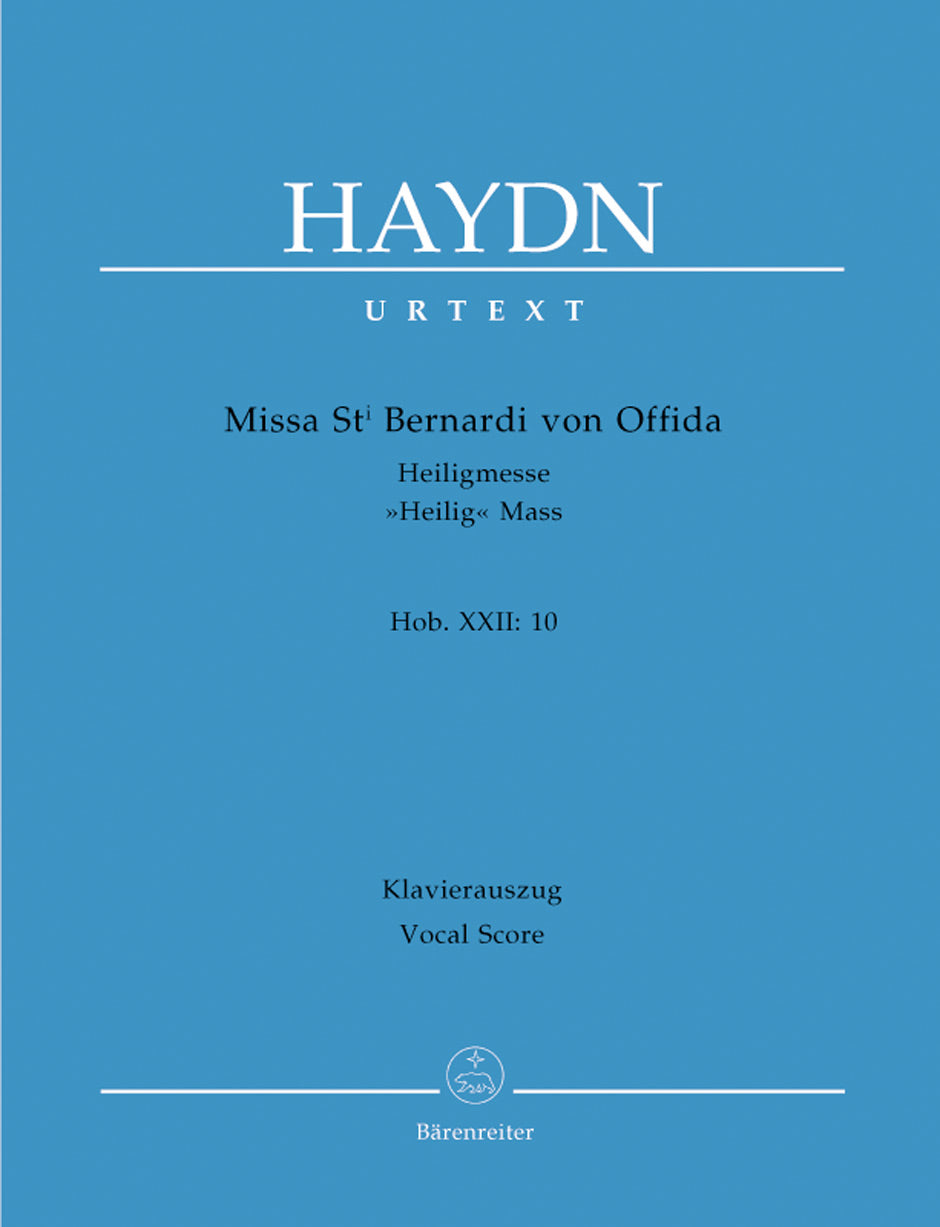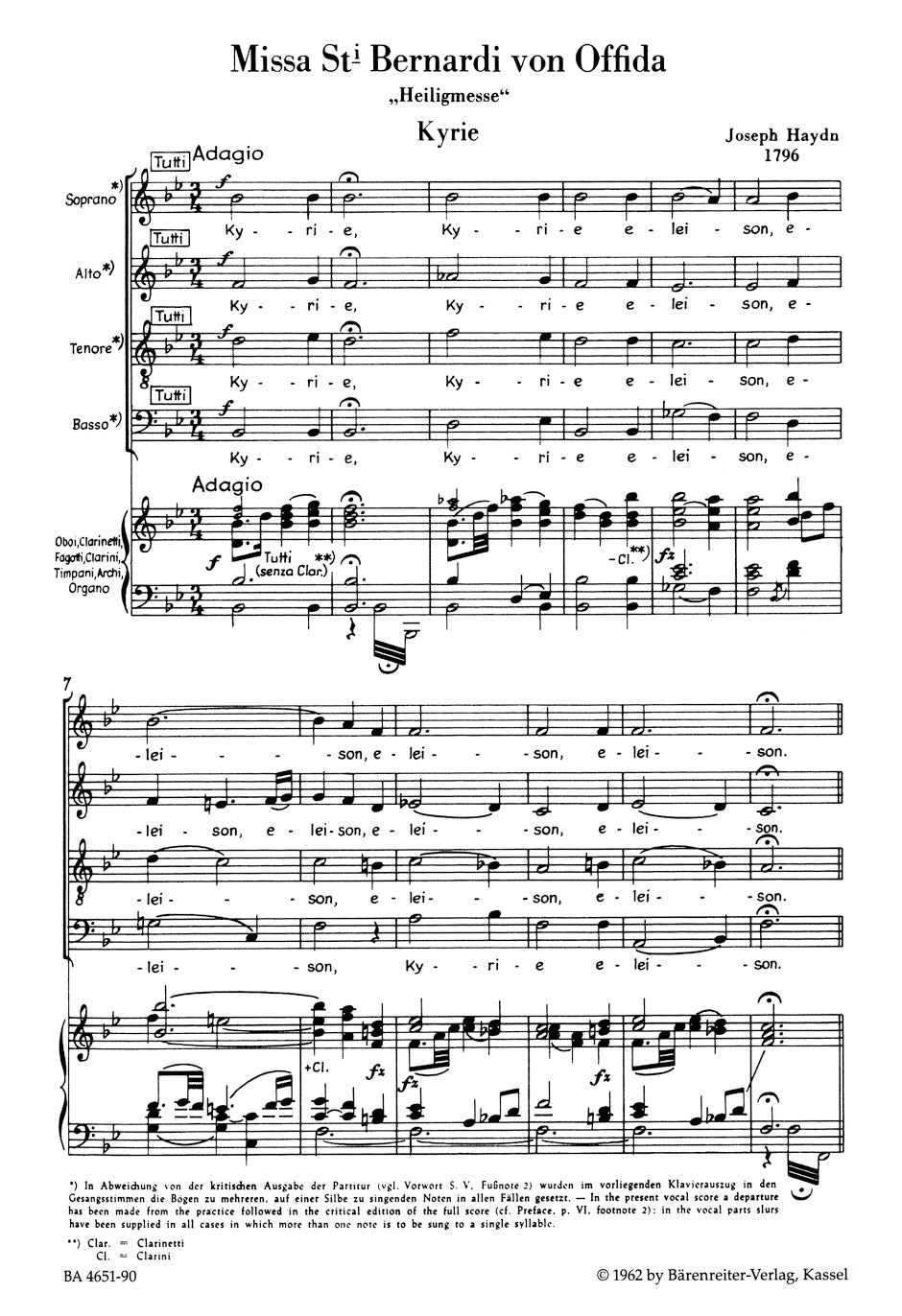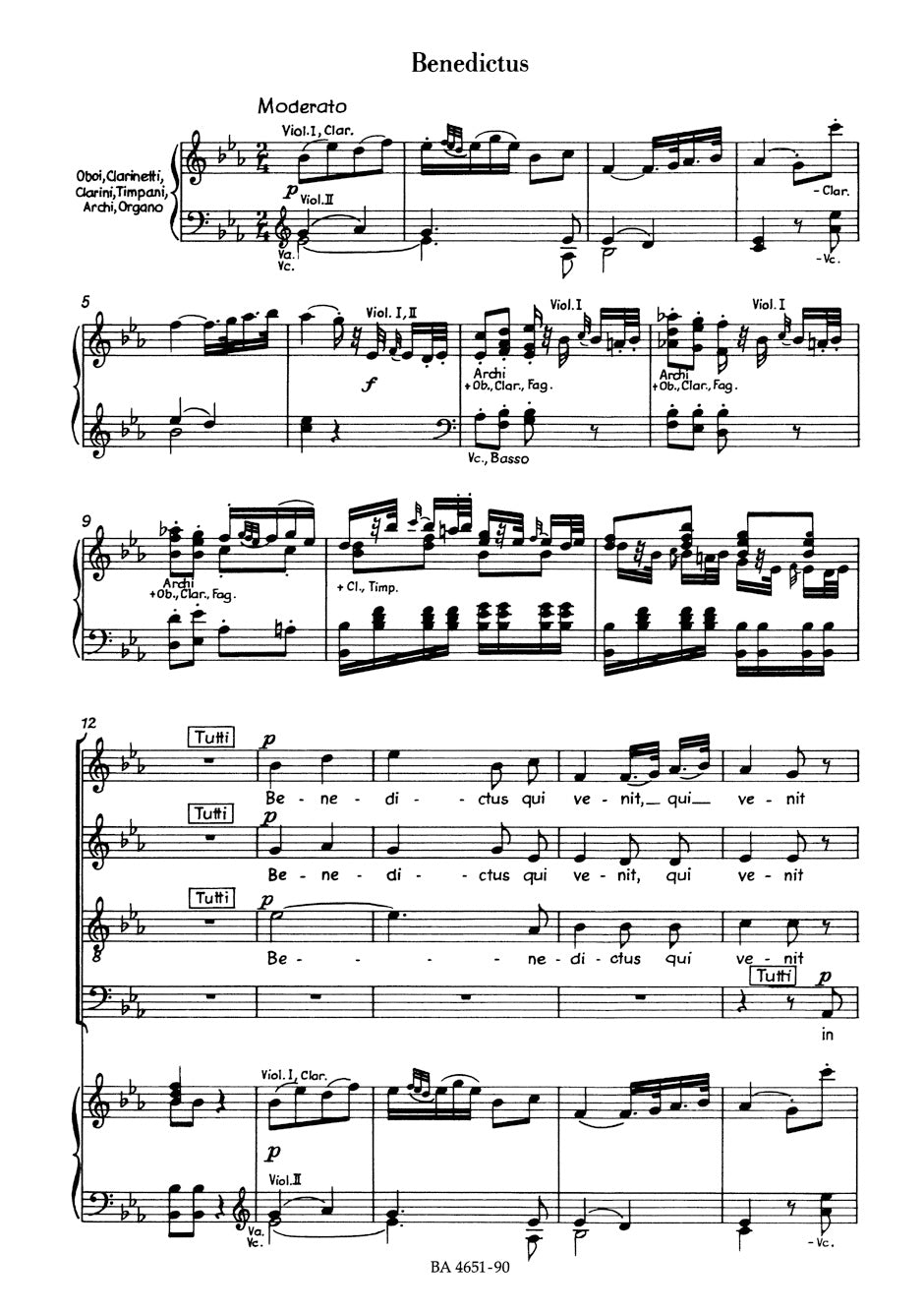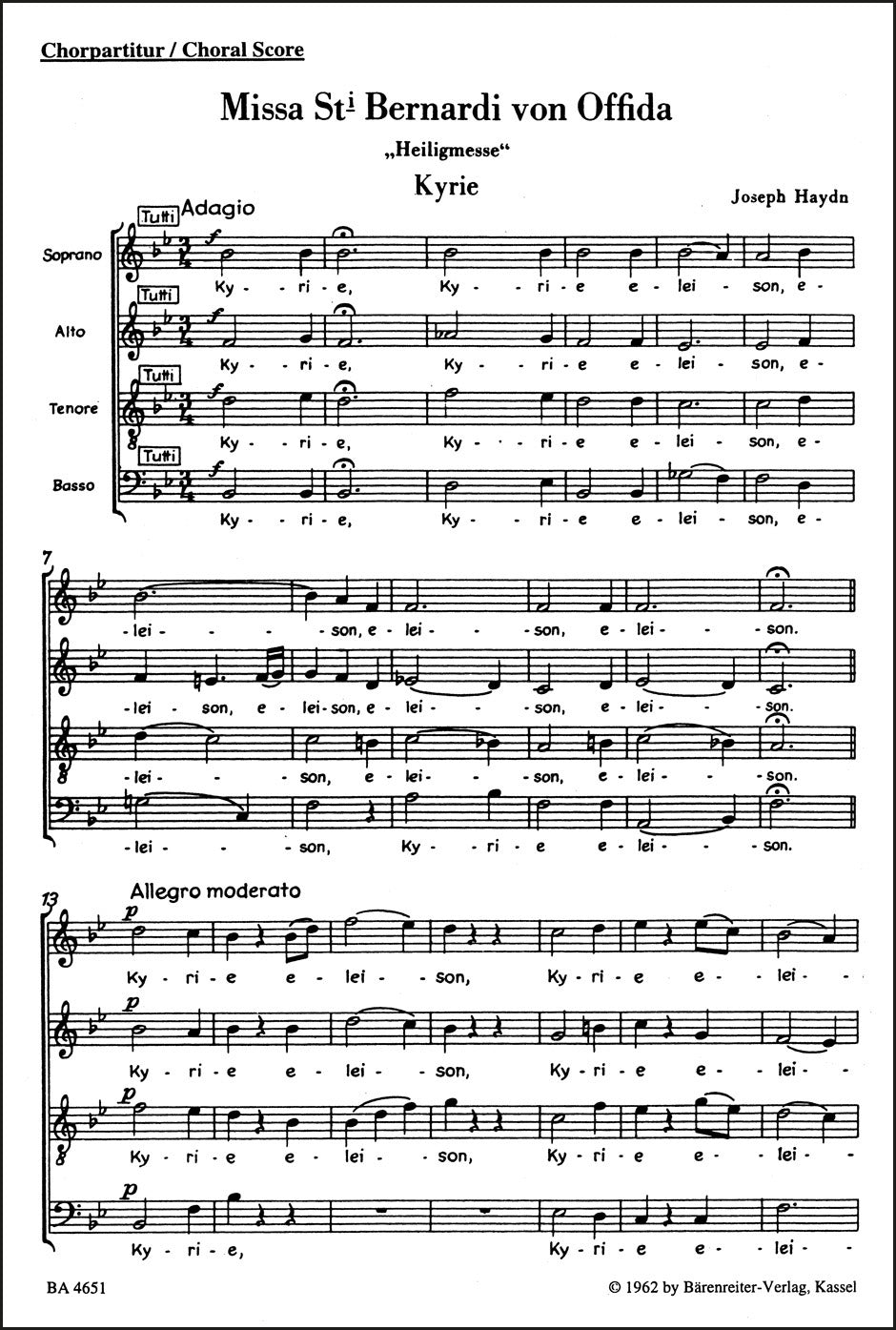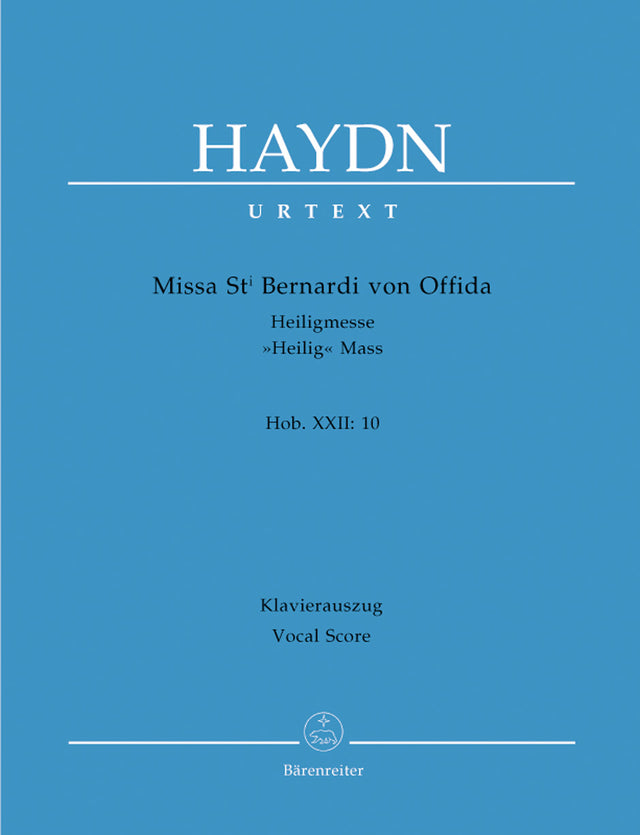Haydn: Missa Sancti Bernardi von Offida, Hob. XXII:10
"Heilig Mass"
In stock and typically ships within 1 business day.
- Composer: Joseph Haydn (1732-1809)
- Editors: Howard Chandler Robbins Landon, Christa Landon, Karl Heinz Füssl (1924-1992)
- Instrumentation (this edition): Piano Reduction, SATB Choir
- Originally for: SATB Choir, Orchestra
- Work: Missa Sancti Bernardi von Offida ("Heilig Mass"), Hob. XXII:10
- Work Language: Latin
- ISMN:
- Size: 7.5 x 10.6 inches
- Pages: 125
- Urtext / Critical Edition
Description
Bernard of Offida, 1604–1694, was a Capuchin monk, whose saintly life and devotion to the sick and poor, caused him to be beatified by Pope Pius VI on 19 May, 1795. St. Bernard's name day falls on the 11th of September (a Saturday in 1797), and it is generally thought that Haydn combined doing honour to the Capuchin monk with the production of a new Mass for his patron the day thereafter.
Apparently later performances in Eisenstadt added horns to double the trumpets in the tuttis, and – just as in the previous Mass – the clarinet parts were enlarged; it is almost certain that the new clarinet parts are either by Haydn, or (shall we say) "supervised" by him. As in the Mass in Time of War conductors have the choice of two orchestrations: with or without doubling horns and with or without the supplementary clarinet parts.
The Heiligmesse has always been one of Haydn's most admired works. Its dignity, its strength (we draw special attention to the extraordinary "Gratias", with its brilliant contrapuntal writing), the subdued orchestral grandeur to which the B-flat trumpets contribute a silvery but unmartial weight – all these have made it one of Haydn's most serious and most deeply sensitive church works: its constant popularity in Viennese churches is quite deserved.
Publishers use a lot of words to describe what they sell, and we know it can be confusing. We've tried to be as clear as possible to make sure you get exactly what you are looking for. Below are descriptions of the terms that we use to describe the various formats that music often comes in.
Choral Score
A score for vocalists that only contains the vocal lines. The instrumental parts are not there for reference. Generally, cheaper than a vocal score and requires multiple copies for purchase.
Facsimile
Reproductions of the original hand-written scores from the composer.
Full Score
For ensemble music, this indicates that the edition contains all parts on a single system (there are not separate parts for each player). In larger ensembles, this is for the conductor.
Hardcover
Hardbound. Generally either linen-covered or half-leather.
Orchestral Parts
Similar to a wind set, this is a collection of parts. In the case of strings, the numbers listed are the number of copies included, though generally these are available individually (often with minimum quantities required).
Paperback
When publishers offer multiple bindings (e.g. hardcover) or study scores, this is the "standard" version. If you're planning to play the music, this is probably what you want.
Performance / Playing Score
A score of the music containing all parts on one system, intended for players to share. There are not separate parts for each player.
Set of Parts
For ensemble music, this indicates that there are separate individual parts for each player.
Solo Part with Piano Reduction
For solo pieces with orchestra, this is a version that contains a piano reduction of the orchestra parts. For piano pieces, two copies are typically needed for performance.
Study Score
A small (think choral size) copy of the complete score meant for studying, and not playing. They make great add-ons when learning concertos and small chamber works.
Vocal Score
A score prepared for vocalists that includes the piano/organ part or a reduction of the instrumental parts.
Wind Set
For orchestral music, this is a collection of wind and percussion parts. The specific quantities of each instrument are notated.
With Audio
In addition to the printed music, the edition contains recordings of the pieces. This may be an included CD, or access to files on the internet.
With / Without Fingering (Markings)
Some publishers prepare two copies - a pure Urtext edition that includes no fingering (or bowing) suggestions and a lightly edited version that includes a minimal number of editorial markings.

